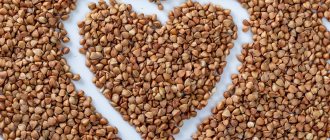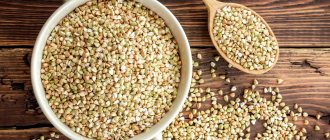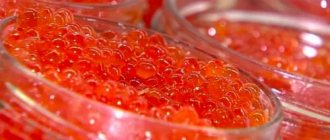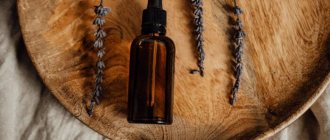Churchkhela is a Georgian patented national delicacy, without which not a single feast is complete in Georgia. Moreover, this dessert is also loved in Armenia and Turkey. Armenia even tried to prove that it was the discoverer of churchkhela in wide circles. But still, whatever one may say, the debate stopped, because churchkhela, an original Georgian delicacy, there is even historical evidence for this. Sources talk about how Georgian warriors, when fighting with the enemy, took churchkhela with them and could continue the campaign for a long period, eating this hearty product. In dark clothes, they hid under the cover of darkness and ambushed the enemy as soon as he lit a fire and revealed himself. The Georgian warriors themselves did without a fire and hot food.
But let's not go too far into history. In our time, Slavic people fell in love with churchkhela when they met on sea beaches and markets. This oriental sweet is most often found in the resort towns of the Black Sea coast.
Having tried it once, no one remains indifferent. And when there is demand, then supply increases. Therefore, churchkhela today can no longer be called a curiosity; you can even buy it in large supermarkets. Consequently, unscrupulous sellers also make their presence felt by using not pure grape juice as the basis for delicacies, but various artificial impurities, adding flavorings, flavor enhancers and chemical thickeners. Therefore, it is very correct that you wondered how to cook churchkhela at home.
Let’s first figure out what juices this so-called “Georgian Snickers” is made from. You have already noticed that the color of churchkhela can be different, from white, yellow, green to red, burgundy and even black. It depends on the grape variety. It is the variety and color of the grape that gives churchkhela its distinctive color and taste. At the origins of this national dish, only ripe and sweet grapes were always used. Nowadays, pomegranate and other juices are often added to churchkhela. First, we will look at the primitive recipe for churchkhela, which Georgian housewives have been preparing for centuries.
Traditional Georgian churchkhela
So, how to make churchkhela at home, touching the origins of its appearance, having tried a truly traditional recipe?
It is worth knowing that for this it is better to plan the preparation of churchkhela two days in advance and step by step. On the first day, Georgians always cook badagi. Badagi is a grape juice concentrate that is obtained by boiling the juice. And Georgians cook it over low heat for 5-6 hours, until the liquid boils down to half its original volume. Badagi becomes concentrated and sickly sweet. To prepare badaga, you can take any grapes, after squeezing or grinding the berries and straining the juice through cheesecloth or a fine sieve. Traditionally, churchkhela was always prepared in September, when the harvest season arrived. It is also important to prepare a “working area” at home where the finished churchkhelas will be dried. This could be a hanging bar or just a hanger on which we will soon hang Georgian Snickers. When we have a ready-made grape decoction, we can start preparing the churchkhela itself. To do this, take a thread, preferably nylon, if not, you can use a regular one, but then fold it in half. We decide on the length of the thread, taking into account that the length of the churchkhela itself is approximately 20-25 cm + reserve for the loop, from which we will later hang the treat to dry. We thread the thread into a thin needle and string nuts on it like beads. Walnuts are mainly used for the filling, but you can also opt for hazelnuts, hazelnuts, almonds, raisins and even peach or apricot kernels. The latter, however, must first be soaked in water until the skin comes off and boiled for several minutes in sugar syrup. Walnuts for preparing churchkhela must be well dried, otherwise the product will quickly begin to deteriorate. You should not fry the nuts in a frying pan, otherwise the kernels will become brittle and you simply will not be able to stick them onto the thread. It is enough to lightly dry the nuts in the oven at a temperature of 20-30 degrees.
While you are making the preparations, threading the nuts onto the thread, put the previously prepared badagi on the fire. When the grape syrup begins to boil, you need to add flour to it. In western Georgia, corn flour was always used, while eastern Georgia preferred to prepare churchkhela from wheat flour. It doesn’t matter what flour you choose, the main thing is the proportions - for 3 liters of badaga, about 1 kg of flour. Add the flour mixture little by little, stirring constantly to avoid lumps forming. Adding sugar if the grapes are not sweet is considered bad manners in Georgia, and it is also worth considering that badagi becomes even sweeter as it cools. The grape jelly-like mass should be simmered over low heat for about 15-20 minutes. Next, dip the nut “beads” into the grape “jelly”, helping yourself with a wooden spatula, so that each nut is covered with the mixture.
How to cook churchkhela so that it turns out thick (“meaty”)? In fact, all the flavor of churchkhela is in the grape shell, so the rougher it is, the tastier it is. To do this, you need to re-dip the “beads” into the broth, after giving the first layer time to dry a little. Hanging churchkhelas should dry in a well-ventilated, dry place for about 5-7 days. Don’t worry if it seems to you that the dessert turned out not as glossy as you saw it on the shelves. The fact is that, after drying, the churchkhela will acquire the shine you desire, and the finished Georgian Snickers should stop sticking to your hands. That's the whole trick, now you can enjoy perhaps the most healthy and nutritious delicacy, which contains many organic acids, proteins, vitamins, vegetable fats and fructose. Moreover, churchkhela can be stored in a cool place for a very long time, since Georgians can’t do a single New Year’s feast without it.
Storage rules
Churchkhela should be stored in conditions of low humidity, in a ventilated room. High humidity is quite dangerous, as this sweetness is very vulnerable to mold.
The storage temperature of churchkhela should not exceed +22°C. In this case, it is better to wrap it in paper or fabric so that they absorb excess moisture.
If the wrapped product is hung in a dry place where it is quite cool (cellar, basement, attic), it will last for 30 - 60 days until it begins to dry out.
This treat cannot be kept in plastic bags. There will be no air access to it, as a result of which it will “suffocate”. At the same time, condensation will begin to form inside the bag, which will cause mold to form.
Storing churchkhela wrapped in fabric or paper is possible on a dark cabinet shelf, which is located in a cool, dry place.
Modern churchkhela
The churchkhela recipe involves natural juice in its composition, but today not everyone has the opportunity to prepare it from natural grape juice, and there’s also the fear of wanting to make Georgian Snickers outside of the grape harvest season.
Don't be discouraged, this is not a problem. You can make churchkhela from purchased packaged juice, and the choice of flavors is huge. So, you may be surprised, but churchkhela prepared at home from packaged juice is no different from store-bought. To prepare, we will need all the same ingredients that were indicated in the previous recipe, only in different proportions and using a different technology. Place 1 liter of juice on gas and boil for 5-7 minutes. At this time, carefully dissolve 1 glass of flour in a glass of cold juice so that lumps do not form until it becomes liquid sour cream. Next, gradually pour the flour mixture into the hot juice in a thin stream, stirring constantly. Cook for 7-10 minutes until the mixture loses its floury taste. Add sugar to taste (store-bought juices are not as sweet as natural ones), if desired, you can add more vanillin, cinnamon or cardamom. Subsequently, the technology for dipping and “drying” churchkhela does not differ from the previous recipe; everything should work out for you. A few days of patience and you can enjoy a delicious and healthy dessert.
What is used to make it?
The components used in factory-made churchkhela are listed on the product packaging. Classic churchkhela is prepared by hand, usually in the fall , and then stored and consumed in the autumn-winter period.
When making real churchkhela, no sugar, starch or, especially, preservatives are added.
The constant components of real Georgian churchkhela are:
The nuts are strung on a thin thread and then covered with a syrup made from boiled juice thickened by adding flour.
After this, the finished threads are hung to dry in the sun or indoors. The drying period is 1-2 weeks , after which churchkhela can be consumed or stored for long-term storage.
Video on how to cook churchkhela at home
Churchkhela is an ancient Georgian dish made from nuts strung on a thread and filled with thick natural juice. The benefits and harms of such products mainly depend on the set of ingredients used. In any case, if technical recommendations for the implementation of the process are correctly followed, the delicacy is enriched with substances necessary for the body.
Another advantage of the dessert is its nutritional value; the product perfectly satisfies hunger, but does not overload the digestive tract. Properly prepared churchkhela can be stored for quite a long time without worrying about the destruction of beneficial ingredients and the disappearance of therapeutic properties.
How to properly store dried persimmons?
You can also store dried persimmons at home in glass containers. The main condition is tight closure to prevent moisture from entering. Another way is to pack dried fruits in wooden boxes, where each layer is covered with gauze.
Interesting materials:
How to propagate violets with leaves? How to plant bay leaves? How to plant violets from leaves? How to plant violet leaf? How is sick leave calculated? How are sick leave days counted? How to count days on sick leave? How to count printed sheets in a monograph? How to prevent the leaves from drying out? How to make an A3 sheet from A4 sheets?
Classic way to prepare churchkhela
In the traditional version of preparing churchkhela, only walnuts and. The process itself is quite simple, although it takes a lot of time. It is worth noting that only churchkhela prepared from natural ingredients and dried under natural conditions acquires characteristic beneficial properties. Store-bought products may be tasty, but the likelihood of obtaining medicinal results from their use is minimal.
The process of preparing the delicacy looks like this:
- Juice is extracted from it and used undiluted. In order for the liquid to reach the desired thick consistency, it is injected.
- Take a regular strong thread. Walnuts are threaded onto it using a needle. You should not make the “necklace” too long, as it may not support its own weight.
Advice: In the process of preparing products, you should use only raw, but well-dried ones. If the ingredients are fried, they will fall apart in your hands and cannot be threaded. Even real churchkhela is not prepared from crushed ingredients; its taste is not at all what it should be.
- Next, the workpiece is dipped into the thickened juice several times. It should cover the product with a dense, uniform layer. If the liquid is not very thick, then after a couple of hours the churchkhela can be covered with juice several more times. Such products are sweeter.
- Semi-finished products are sent for drying in a dark and dry room. It should be from 5 to 10 days.
The use of non-natural thickeners can significantly facilitate the process of preparing churchkhela, but this is not recommended. Such experiments will not only reduce the usefulness of the product, they can harm the body.
Actions to take when sweets dry out
If churchkhela has dried out, there are several ways that will help restore softness to the Georgian delicacy. But, it is important that the product is not spoiled - the surface of the condensed juice is a good environment for the development of pathogenic microorganisms, and if it has hardened, then you can soften it slightly and not get digestive problems like this:
- It is possible to make churchkhela softer if you hold it over steam for a short time. But, in this case, you need to eat it right away, since the delicacy cannot be stored further.
- You can soften the juice crust in the microwave - the Georgian delicacy must be heated in it for 2-10 seconds. After this, it must be eaten within the next 2 hours.
- In extreme cases, water can make Caucasian sweetness softer, but if you overdo it, there is a risk of irreversible damage to the product.
The best option is to prevent the treat from hardening, and to do this it must be stored in compliance with each of the rules.
Modern options for preparing churchkhela
Today, the number of recipes for preparing churchkhela, or, as it is called in some countries, “chuchkhela,” has increased significantly. The following products are now often used as main and auxiliary ingredients:
- In addition to grape juice, apple, orange, plum, cherry, apricot and other drinks began to be actively used. Products acquire a special taste and properties if they are prepared with.
- The base can also be almost anything, the main thing is that the components can be strung on a thread. It could be peanuts,...
- Today, dried fruits, for example, dried berries, are increasingly being added to products. The syrup-drenched pieces are rolled in whole or crushed seeds.
Depending on the set of ingredients used, the properties of the product and its calorie content will change. This must be taken into account, especially if churchkhela is intended for children, the elderly or overweight people.
What does it depend on?
Churchkhela, made according to traditional recipes, is not a perishable food product.
The shelf life of churchkhela depends on the production technology: factory-made churchkhela, in the production of which preservatives and sugar were used, and it itself is vacuum-packed, can be stored for a very long time.
Classic churchkhela, made according to the traditions of Georgian cuisine, is stored for a shorter period, which depends on compliance with the manufacturing technology and conditions of transportation and storage.
Composition and beneficial properties of churchkhela
Churchkhela, prepared exclusively from natural ingredients, becomes a source of many useful substances for the body. Regardless of what ingredients are used in its production, the finished product will contain the following chemical compounds and elements:
- Glucose and fructose. They are excellent energy suppliers.
- Organic acids. Participants in metabolic processes, stimulants of chemical reactions.
- Vegetable fats. They prevent the formation of blood clots, reduce the level of harmful cholesterol in the blood, and stimulate brain activity.
- Main groups of vitamins. Prevent the development of deficiency conditions, increase the functionality of organs and systems.
- Mineral elements. Maintains acid-base and water balances. They provide fabrics with building material. Necessary for chemical reactions.
Thus, regular consumption of churchkhela, even in small quantities, allows you to achieve the following results:
- Increases activity due to energy production. The activity of the brain improves, the work of all organs and systems is stimulated.
- The functioning of the heart and blood vessels improves. The risk of developing atherosclerosis and hypertension is reduced.
- The body is rejuvenated. This has a positive effect not only on external data, but also on general condition.
Of course, to obtain all of the above results, you need to include only natural churchkhela in your diet. It should not contain thickeners, preservatives, sweeteners or other chemical additives.
Soften my heart, Lord...
An unpleasant moment happens when the prosphora becomes moldy. What to do? Every second person asks this question. Because not everyone knows what to do in this situation. It is necessary to immerse such prosphora in running water.
Why does it get moldy?
Why the prosphora became moldy will remain a mystery to any person. After all, this is a sacred product that simply cannot be spoiled. But, unfortunately, this can happen. According to the experience of many people, there are various methods to store this product. The prosphora must be cut into small pieces and placed in a linen bag. They will dry out and turn into crackers. In this form they can be eaten gradually. If you put them in a plastic bag, you cannot close them and leave them without air. And in a dried state, such pieces can be stored for at least several years. If the prosphora is moldy, what does it mean? Mold may appear on sacred bread due to the fact that there is some moisture inside it, and this is the best environment for bacteria to accumulate.
We recommend reading: How to Dry Damp Pistachios
Many people who believe in God go to church and pray. These are sacred rituals, using the right meal, keeping a fast. Small pieces of Lamb are cut out from a piece of prosphora. They are served in any churches during or after services. The meaning of the prosphora is similar to the antidora. Antidora means "communion". So prosphora is used for remission of sins and cleansing of the soul. People cannot take communion every day, but every person can afford to eat a piece of prosphora. This is the symbol of communion.
It is necessary to take the prosphora with your hands crossed crosswise. Then kiss the hand of the priest who gave the prosphora.
A prosphora was given in the church, they simply put it in a bag and tied it, and then simply forgot about it. What to do next? This situation describes a careless attitude towards the shrine. After all, prosphora is distributed to people to cleanse the soul. A person cannot take communion every day, but he can eat the sacred prosphora. She cleanses the soul and conducts confession of sins. When the prosphora becomes moldy, it can be dipped in the river. It can also be buried in the ground, but away from places where people walk.
It is best to ask temple servants about what to do with moldy prosphora. The priests will definitely give an answer.
The Nine Day Prosphora was dedicated to all holy people. After the seal is placed, nine particles are removed from the bread. The health prosphora is baked for the health of the participants in the liturgy. A similar one is a funeral service; it is used by believers for the repose of dead people.
Some types of prosphora listed here cannot mold. Because they are baked in large sizes and cut into small pieces for ease of distribution to everyone participating in the liturgy.
In the church, the prosphora is cut with a dedicated knife specially for this purpose. It's called a copy. It is stored separately from cutlery and not in the kitchen at all. Therefore, it is better not to use a kitchen knife for slicing, as this ordinary item is not suitable for cutting the sacred product. It is best to break into pieces for better storage.
Braga is a drink that is used both independently and after processing or distillation. Moonshine, chacha and other strong alcoholic products are prepared from mash. Braga is also drunk on hot summer days, as it perfectly quenches thirst. But if this drink is not prepared correctly, then mold will appear on the mash, and many novice distillers do not know what to do with it, whether such mash is suitable for further distillation.
If the mold is developed, then you cannot help but get rid of it, but immediately pour out such mash. Fungi and their waste products have managed to poison all the liquid at different depths and produce toxins, so superficial disposal will not play any role in cleaning the drink.
What to do in the early stages of the appearance of a film of mushrooms? You can use techniques such as:
- Pouring mash. You need to make a hole in the mushroom film with your finger, and lower a tube through the hole into the middle of the liquid. The drink is poured over it into another container without sediment and the top layer with mushrooms. In this case, it is important to ensure that part of the film does not attach to the tube and does not fall inside the new fermentation container. This method often gives relapses, since it is impossible to objectively assess the growth of fungi. In this case, a large amount of alcohol is lost.
- Sterilization. The most reliable method for getting rid of mold. The wort is heated to a temperature of 70-75 degrees and boiled for two minutes. Then the liquid is removed from the heat and cooled to room temperature. Then additional yeast is added to the container. Sometimes they put a sulfur wick into a container of mash and keep it in the liquid until it goes out. After which the vessel is sealed again. This method may affect the taste of the drink, but it will get rid of mold.
- After sterilization or disposal by simple transfusion, it is recommended to re-ferment the drink by adding wort, fruit or sugar.
Of course, complete souring or the appearance of developed mold means the product is unsuitable. Braga, without a doubt, must be recycled. It is not even advisable to use it as food for pets, as this can cause poisoning in them. At the initial stages, the liquid can be saved, but it is better to prevent the development of microorganisms at all, since the disposal process is labor-intensive and does not provide a complete guarantee of safety.
Mold means the appearance of white deposits or flakes on the surface of the mash. It can easily be distinguished with the naked eye from the usual release of foam during fermentation. In some cases, the mash can be saved , but there is still a certain risk of damage to the product. If you are ready to take risks for the product and your health, then get ready for the “battle” for the future moonshine.
You should understand that investing in mash costs much less than your health , so we definitely do not recommend using the instructions described below. If we are talking about 20–30 liters of wort, then there should be no talk of any serious losses. It is much easier to deliver a new product by analyzing past mistakes.
Harm of churchkhela and contraindications
When including churchkhela in your diet, it is important to understand that its calorie content can reach 500-700 units per 100 g of product. The components of the dish are often the cause of allergic reactions. Here are a few more points to keep in mind:
- Eating churchkhela against a background of obesity and lack of physical activity can cause weight gain.
- Even completely natural products are prohibited for diabetes.
- Tuberculosis and kidney diseases are also contraindications.
- During pregnancy and breastfeeding, it is better to avoid delicacies so as not to provoke an allergy.
Churchkhela can be an excellent natural medicine and an incentive to lift your spirits. You just need to eat it in small quantities and preferably at least every 1-2 days. More frequent use of the product will not bring much benefit to the body, but can provoke unpleasant consequences.
My daughter recently said that she had never eaten anything tastier than Snickers. ((Well, how do we understand this? ((We have cheap grapes now, our own nuts... I decided to make her a Snickers, but only Georgian - a natural, tasty and nutritious delicacy. Threat. Georgian girls (and boys), correct me, if it didn’t turn out quite authentic, but I tried...
There is salvation from mold! What foods CAN be consumed even if they are spoiled?
We all know that mold is bad.
It’s just that some products can actually be saved even if there are signs of “mouldiness”; others, on the contrary, should under no circumstances be consumed, even after cutting off the mold. How to distinguish one from another and how exactly to save food from mold? Here are some recommendations given by the American Food Safety Inspection Service (FSIS).
Sausages, boiled sausages - throw away. If there is a small white coating
Churchkhela recipe:
I took the Isabella variety for the juice; it is very aromatic, sweet, and the juice it produces is very dark in color. The easiest way to get juice from grapes is, of course, through a juicer. But I don’t have such a miracle of technology, so I just pureed the berries in a blender and strained, grinding, through a sieve. If you really have a hard time with grapes (it’s the season here, I paid 100 rubles for three kilograms), take ready-made, packaged juice, but the taste, of course, will be completely different. From three kg of grape juice I got almost 2 liters.
Prepare the nuts. I have a mix of walnuts and hazelnuts. Break them into halves or quarters, but no smaller, otherwise you won't be able to thread them. Leave the hazelnuts whole. Using a fairly dense, strong thread and needle, make these nut beads.
Pour out about a glass of juice, put the rest on the stove and bring to a boil. Cook for about five minutes. Add flour to the juice in a glass and pour into the boiling juice, stirring vigorously. I didn’t add sugar - the grapes were very sweet, but you try, you may have to sweeten them. About the flour. I've come across different flour-juice ratios. For myself, I settled on this option - I didn’t add all the flour, cooked, stirred and looked at the density of the resulting mass. It should be quite thick and viscous. I dipped the edge of the thread with nuts and looked to see if the mass was held on the nuts and if it didn’t flow down too quickly. The amount of flour may need to be increased or, conversely, reduced. This viscous and aromatic mass must be cooked for another 5 minutes.
Well, now - the best part. Dip the threads with strung nuts into the syrup, melting them with a spoon. We lift it above the pan, wait a little for the excess mass to drain and hang it in a pre-prepared place (I hung it on the slightly open oven door on hooks made of paper clips. You can use an ordinary clothes hanger for this purpose). Be sure to place a baking sheet or baking paper under the churchkhela!
This procedure will have to be repeated several times, increasing the grape layer. When you dip the last thread, the first one will already drain slightly and harden, you can wait a couple of minutes and start the process again: dip it, lift it, glass a little, hang it up. I did it three times. If there is any grape juice left, add substandard small pieces of nuts and place in candy molds.
This is not only tasty, but also a nutritious sweet that has no equal in nutritional value among all delicacies. It contains a huge amount of glucose, fructose, proteins, organic acids and vitamins. Therefore, learning how churchkhela is made will be very interesting for all beginners and experienced cooks. Today there are many varieties of this dish, which is prepared differently in each region of Georgia.
How to make churchkhela at home?
Even an inexperienced cook who has previously bought sweets in the supermarket can easily understand how to make churchkhela at home.
Ingredients:
- natural – 3 l;
- wheat flour – 750 g;
- corn flour – 250 g;
- peeled nuts (almonds, hazelnuts, walnuts) – 700 g.
Preparation
Heat all the nuts in a dry frying pan for 3-4 minutes and cool them slightly. Remove the husks from the almonds and hazelnuts by lightly rubbing them with your palms. Chop the walnuts into fairly large pieces.
Take strong threads approximately 40-45 cm long and use a thick needle to thread the nuts onto them (they should take up about two-thirds of the length). Be sure to make a large knot at one end, tie the pieces in pairs using the loose ends, and hang them on any wide crossbar.
Not everyone knows what modern churchkhela is made from, but the main ingredient - grapes - remains unchanged. Make jelly from it. To do this, pour the juice into a saucepan, wait until it boils, reduce the heat slightly and simmer for about 10 minutes.
Pour one liter of juice separately and leave it to cool, and boil the remaining liquid for about another 10 minutes. Pour wheat and corn flour into a bowl with cooled juice and stir thoroughly until the smallest lumps are completely removed.
While stirring constantly, pour this mixture into the remaining juice, which continues to simmer. Boil for about 25 minutes. You should turn it off when the consistency of the mass resembles thick porridge.
Place a tray under the crossbar with suspended pieces, which need to be dipped in jelly and hung again on the crossbar. If you are wondering how churchkhela is made in Georgia, you should understand that this is one of the most important stages in the preparation of this delicacy. Therefore, try to ensure that the workpieces are well saturated with liquid, and when they dry, repeat this simple procedure again. At the end, move the crossbar with churchkhela to a well-ventilated room for a couple of weeks, then wrap it in parchment and store it in a place where there is no access to sunlight.
How is churchkhela made in Abkhazia?
In principle, the recipe for the dish is in many ways similar to its Georgian counterpart, but it has its own nuances: the Abkhazians use only hazelnuts for cooking. Try making churchkhela in both ways and compare which taste you like best.
Ingredients:
- – 500 g;
- grape juice of natural origin – 1 l;
- wheat flour – 150 g;
- sugar – 50 g.
Preparation
We peel the hazelnuts from the husks and string them onto strong threads about 25 cm long, using a needle. We tie a knot at one end of the thread. Boil the grape juice for about a quarter of an hour over low heat, add sugar, remove from the stove and cool. Then place the pan on the fire again and, remembering to stir constantly, add flour. Cook the mixture for another 10 minutes, stirring constantly to avoid the formation of lumps.
Churchkhela is a delicious national Georgian and Armenian delicacy made on a string. It turns out that the recipe for making churchkhela is quite simple, and you can make it yourself at home. It is usually made from walnuts, but almonds or hazelnuts can also be used. What always remains unchanged in this dish is the grape starchy jelly-like mass called Tatars. It is brewed from grape juice, sugar and flour. Making churchkhela is a simple and very interesting procedure, however, you will have to wait about a couple of weeks for the results. Let's look at recipes for making churchkhela.
Churchkhela at home
Ingredients:
- grape juice – 2 l;
- peeled walnuts – 1.5 tbsp;
- wheat flour – 250 g;
- honey – 0.5 tbsp.
Preparation
How to make churchkhela at home? To begin, carefully string the hazelnuts and walnut halves onto a strong, thick thread approximately 25 cm long using a large needle. We leave 6 cm of free thread on top and make a loop, from which we will then hang our delicacy.
Pour the remaining juice into a saucepan and begin to simmer until it boils over low heat. After boiling, add the juice and flour, carefully pouring in a thin stream, stirring continuously. Next, without stopping stirring, add honey. Boil the mixture to a consistency reminiscent of very thick jelly. Then remove the tatara from the heat and, stirring, cool to 50 degrees.
Now take the threads with nuts and completely immerse them in the prepared mass for about 2 minutes, so that the entire thread is covered with thick juice.
Dry the churchkhela in a dry, well-ventilated area. Be sure to place paper under the sweetness, because juice will drip at first. Determine the degree of readiness as the top layer dries, and the inside of the churchkhela should remain soft. After drying, transfer the treat to the box, alternating with parchment paper. The sweetness is completely ready after about 2-3 months, when the delicacy is completely dried out.
Secrets of choosing fresh delicacies
Churchkhela is prepared using classical technology during the harvest of ripe grapes; the vitamin product prepared at this time can be easily preserved until the next harvest (year). However, the traditional recipe for sweets has undergone changes over time. The famous dish is now prepared from various types of nuts (almonds, hazelnuts, peanuts), even pumpkin seeds.
To preserve churchkhela brought from southern countries, you need to purchase only fresh goods, adhering to the selection rules:
- You cannot buy nut sweets whose top layer is covered with sugar grains. Such a product was prepared in violation of cooking technology.
- If the dessert contains excess flour and sugar, the shell of the delicacy will be covered with cracks. Such a treat cannot be delivered to your place of residence.
- Before you buy churchkhela, try it. The consistency of the sweet should not be “rubbery”, and when chewing you will feel the taste of fresh nuts.
If you want to treat your friends and family, you will have to store the churchkhela at home, so when buying, check its quality by bending it with your hands. A quality product has moderate hardness - a soft interior under a dense crust. A free-bending nut stick probably contains extra ingredients.
Violations of manufacturing, drying and transportation technology will lead to the fact that the Georgian treat will begin to dry out or become covered with a layer of mold during transportation.
Is it possible to eat foods with mold?
» Mold that suddenly appears on food can ruin any appetite. It brings with it a lot of troubles: food ceases to be suitable for eating, becomes tasteless and dangerous to health.
The occurrence of mold is associated with violation of the terms and rules of food storage. In such a situation, it is difficult to keep food, be it bread, sausage or dried fruit, in order. Over time, the growth of the fungus accelerates and mold covers the entire surface of the product; this process occurs the faster, the more favorable the environment for its development.
Factors contributing to mold growth:
- warm;
- increased moisture levels;
- air stagnation.
Even if you remove some of the moldy product, it will still remain contaminated.
Even without visible signs, it should not be eaten in any case. Many types of mold have been studied in the world, some of them are harmless (subject to certain conditions), some are extremely dangerous, and some can cause allergic reactions.
Business idea: exotic fast food
Modern life is not only dynamic, but also full of surprises, without which we can no longer live. “People are used to computer science and movement,” says psychologist Andre Levirman from Italy. “New travel, new cars, new food... all this “new” for the public becomes an obsession.” This is why we go on tours to distant countries, despite the high prices. This is why we change cars, even if our car suits us quite well, and this is why we try new dishes, although we adore traditional borscht or potatoes with herring.











